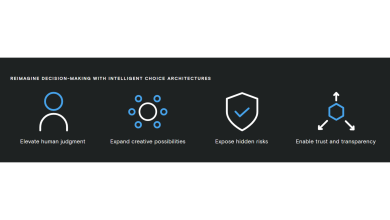
Artificial intelligence data centres demand enormous power for computing, cooling and ventilation, putting pressure on electricity grids that still rely, in part, on fossil fuels. The outcome: rising carbon emissions and growing concern over AI’s long-term environmental footprint.
In response, there has been an increase in regulations requiring the reporting of energy and resource use by AI. This article compares the US, UK and EU reporting regimes, highlighting the key regulations and their implications.
The UK
The UK’s primary regulation that governs the recording and reporting of energy usage by AI is the Streamlined Energy and Carbon Reporting framework (“SECR“). Under SECR “large” companies must report their energy use, greenhouse gas emissions, and energy efficiency actions in their annual reports. A “large” company or LLP is one that meets two of the following requirements: (a) it has at least 250 employees; it has an annual turnover of more than £36 million; or it has an annual balance sheet of more than £18 million. Many companies offering artificial intelligence services (or providing the data centres in which they are hosted) are likely to meet these requirements.
Companies caught under SECR are required to disclose the greenhouse gas emissions directly generated by the company and also indirectly generated from their purchased energy. In addition, companies are encouraged to report indirect emissions generated throughout their supply chain – which although voluntary, many companies do choose to disclose this information.
In their annual report, companies must also explain the actual and potential impacts of climate-related risks and opportunities on their businesses, strategy, and financial planning. This involves considering different climate scenarios and how they might affect the company’s operations and financial performance. The risk management section requires companies to disclose how they identify, assess, and manage climate-related risks, integrating these processes into their overall risk management framework.
Larger providers of AI services may also need to comply with the Companies (Strategic Report) (Climate-related Financial Disclosure) Regulations 2022 (“CRFD Regulations”). These regulations apply to companies with more than 500 employees and are either (a) a listed company or (b) have a turnover of more than £500m.
Under the CRFD regulations, companies must disclose information aligned with the recommendations of the Task Force on Climate-related Financial Disclosures (“TCFD”). This includes details on governance, strategy, risk management, and metrics and targets related to climate change. Companies are required to describe the board’s oversight of climate-related risks and opportunities, as well as management’s role in assessing and managing these risks.
Both the SECR and CRFD regimes apply to companies as a whole and in any sector, rather than specifically to AI services or individual data centres, but given the attention to AI’s environmental impact the reporting under these regimes by AI providers will likely be more heavily scrutinised.
The EU
The EU has gone further, with reporting requirements specifically for data centres. Given that nearly all AI services are hosted within data centres, the EU regime will indirectly, but certainly, impact AI companies.
The EU’s approach to energy usage reporting in data centres is primarily governed by the Energy Efficiency Directive (“EED“).1 The EED requires data centres to report their energy performance and sustainability metrics to a central European database. Data centres were first required to comply with these requirements by 15 September 2024 and then provide an annual report by 15 May of each following year.
The EED applies to data centres that are sited in the EU with an installed IT power demand of at least 500K, which will apply to nearly all AI-focused data centres. It applies to both own-use data centres (for a company’s own systems or “as-a-service” solutions provided to customers) and to data centres where space is provided for a customer’s systems (co-location).
Data centres must report various key performance metrics, including energy consumption, power utilisation, temperature set points, waste heat utilisation, water usage, and the use of renewable energy. They must also report the compute capacity of the data centre so that the EU can calculate the energy efficiency.
The EU plans to publish aggregated data at both the Member State and EU levels, promoting transparency and accountability, but data on individual sites will be kept confidential.
There is currently no UK regime equivalent to the EED that specifically targets data centres in the UK, but there is growing pressure for the UK to institute its own data centre reporting so that energy providers and water companies can properly assess future demands and ensure that the demands of data centres are balanced against other priorities.
The US
While the United States does not yet have a unified, mandatory national / international framework equivalent to the UK’s and EU’s regimes, several federal and state-level initiatives are emerging to address the sustainability of AI infrastructure – although there are contradictions of approach at different levels of government.
1. Congress: Artificial Intelligence Environmental Impacts Act of 2024
The most significant federal development is the proposed Artificial Intelligence Environmental Impacts Act of 2024 (S.3732) (“AI Environmental Impacts Act“). The AI Environmental Impacts Act was introduced into the U.S. Senate on February 1, 2024, and was referred to the Committee on Commerce, Science, and Transportation. The Act has not passed into law, but its introduction signals growing federal interest in the sustainability of AI technologies.
More specifically, the AI Environmental Impacts Act aims to establish a reporting system for entities involved in AI development and deployment. Importantly, however, the Act and its “requirements” are voluntary. Under this Act, the U.S. Environmental Protection Agency (“EPA“), the U.S. Department of Energy, and the National Institute of Standards and Technology (“NIST“) are tasked with convening a consortium of stakeholders, comprised of industry, academia, and government, to evaluate potential impacts and recommended best practices.
The consortium would then create guidelines for reporting energy consumption, water usage, pollution, and electronic waste associated with the full lifecycle of AI models and hardware. NIST would also develop a voluntary framework for companies to report the environmental impacts of their AI systems.
Although voluntary, this framework lays the groundwork for future mandatory disclosures and reflects increasing federal attention to AI’s environmental footprint. The proposed Act also encourages transparency and accountability in how AI systems affect the environment, which will undoubtedly be questions asked by investors or pursued in diligence in the context of a transaction.
2. Governmental: EPA Guidance and Executive Orders
In contrast, in January 2025, the EPA issued clarifying guidance under the National Emission Standards for Hazardous Air Pollutants (“NESHAP”) supporting the use of Reciprocating Internal Combustion Engines (“RICE”). This guidance allows certain fossil-fuel powered backup engines at data centers to operate up to 50 hours per year in non-emergency conditions to support grid reliability. While not a reporting mandate, this interpretation acknowledges the critical role of data centers in AI infrastructure and signals regulatory flexibility to use fossil fuels to ensure uninterrupted power supply. This development has also been welcomed by AI and data centre developers who have been heavily involved/invested in acquiring RICE generation units to support data center development.
In a similar vein, Executive Order 14318, signed by President Donald Trump on July 23, 2025, is aimed at accelerating federal permitting and reducing regulatory hurdles for the construction of data centres that support AI and includes no environmental reporting requirements. The order is part of a broader America’s AI Action Plan and focuses on things like: encouraging “qualifying projects”, streamlining environmental reviews, efficient permitting, access to development on federal lands. It also includes prioritising dispatchable baseload energy sources, meaning the use of fossil-fuel and other non-renewable energy.
3. State-Level Legislation
Several U.S. states have however gone in the opposite direction and begun enacting AI governance laws that indirectly touch on energy usage through broader environmental and consumer protection frameworks.
For instance, In October 2023, California passed its Climate Accountability Package, comprising SB 253 (Climate Corporate Data Accountability Act) and SB 261 (Climate-Related Financial Risk Act). SB 253 requires large companies doing business in California to report Scope 1–3 greenhouse gas emissions, while SB 261 mandates publication of climate-related financial risk reports, with the first reporting deadline under SB 261 on January 1, 2026. Although not specifically targeting data centres, these rules will capture many of them.
Complementing these measures, the Climate Leadership and Community Protection Act (CLCPA) set ambitious statewide goals, including a 40% reduction in emissions by 2030, 85% by 2050, making sure 70% of energy comes from renewable sources by 2030, and zero-emissions for electricity by 2040, directly incentivising renewable adoption and reducing fossil fuel reliance for data centres.
Similarly, New York has introduced bills that mirror California’s reporting requirements for Scope 1–3 emissions and climate-related financial risks, as well as a swathe of other bills (e.g., Senate Bill S6394A) to regulate data centre energy consumption, annual reporting, fossil fuel power purchase limitations, and utility surcharges and discounts; these remain under review.
Oregon’s POWER Act (HB 3546) addresses data centre utility costs, taxation, and electricity consumption, aligning with broader state-level environmental and utility regulations, providing clear guidelines for assessing property and energy-related assets.
Looking Ahead
With no unified global approach, an AI provider could be subject to multiple reporting regimes depending on the location of their business, customers, and underlying data centre infrastructure. There is a common direction in the UK and EU towards more mandatory environmental reporting rules.
However, the US approach is fragmented with widely different approaches being adopted across federal and state levels. On one hand, states like California are enacting laws that promote renewable energy development, directly impacting data centres by pushing for increased sustainability and environmental responsibility. These state-level initiatives align with broader goals of reducing carbon footprints and enhancing energy efficiency. On the other hand, federal actions, such as the EPA guidance and the President’s Executive Order 14318, may seem to discourage reliance on renewable energy sources and green-light the unmonitored use of fossil fuels.
The US landscape currently appears much like the UK and European one from nearly a decade ago. That began with fragmented voluntary reporting (under the TCFD) which was only adopted by some businesses, and then only later crystallised into mandatory reporting at a company level, and now in the EU at an individual data centre level.
Even without legal regulation, more AI providers are expected to voluntarily report their energy usage and emissions. Where a US-based AI is providing an international service involving the cross-border processing of data of UK and EU citizens, the AI provider may need to provide this information to satisfy international customer expectations as this becomes the norm.
There may be other commercial benefits too. Understanding the full supply chain energy usage can help improve energy efficiency which allows AI providers to cut operational costs and boost profits. Energy / emissions reporting might enhance a business’s reputation and appeal to environmentally conscious customers. Transparent reporting also opens up investor opportunities, making businesses more attractive to those investors focused on sustainability. Additionally, institutional lenders sometimes favour companies with clear, measurable improvements in energy and utility usage, and this could grant access to ring-fenced sustainable finance funds.
Looking forward, AI providers will need to closely monitor the development of sustainability reporting regulations and standard market practice to ensure that they remain both legally compliant and commercially competitive.



